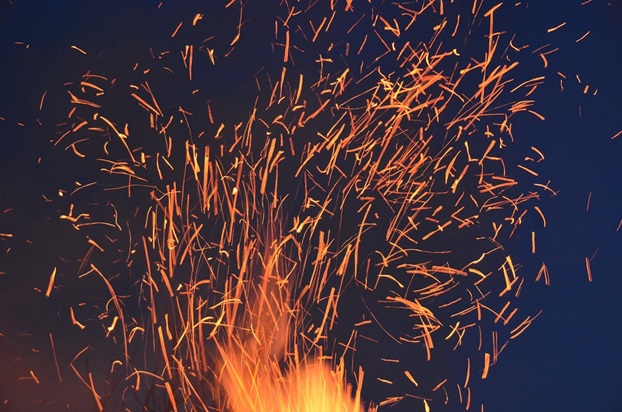Check your state’s hunting digest. You might see a leaf in there about responsible range use.
If you look closely, you’ll see that all the basics are there - shoot at suitable targets, make sure there’s a backstop, beware of ricochet, and so one and so forth.
In some states, particularly those in the West, you might see some special notes regarding recreational shooting and wildfire safety.
Naturally, you might see restrictions at some outdoor ranges (or at some times of year) for incendiary, tracer, and armor piercing ammo.
This might include green tip 5.56, despite the fact that the former is none of those categories mentioned.
This is understandable in western states where there is a high risk of wildfire at the drier times of year. But at the current time, there are restrictions in eastern states that are typically more humid and therefore at a higher current risk of wildfire.
You probably don’t want to be shooting green tip 5.56 at those outdoor ranges, even if it’s permitted.
But why? And what gives? We’ll break it down here.
But It’s Not Incendiary (or Armor Piercing)!
Given green tip 5.56’s attractive price point and generally fair availability, you might think it’s the perfect candidate for burning brass at the local state range, especially in the fall and winter when there aren’t a lot of people out.
Well, it can be, at some times of year. Considering the drought that’s ongoing throughout much of the country, you might want to hold off, even if there isn’t a patent restriction where you live.
If you’re just shooting paper targets, it might be fine. But then again, it could still be a problem.
You see, green tip 5.56 is made with a steel tip penetrator insert. This hardens the nose of the bullet, giving it enhanced penetration capabilities.
Here our concern is, however, the hardness. Steel is pyrophoric, which is a big fancy word meaning it sparks when you strike it.
Specifically, the iron in steel is highly reactive in the presence of oxygen. When you get a tiny enough piece of iron in the presence of adequate atmospheric oxygen, it spontaneously oxidizes (burns).
This is why flint produces tiny sparks when you strike it against a piece of steel. It’s the steel that’s making the sparks - not the flint.
Interestingly, flint is just a hard rock. Hard enough to shave off tiny pieces of steel. This is why the flint in the jaws of a flintlock is kept so sharp - it shaves off little pieces of the frizzen and makes a spark. Again, it’s the steel that’s sparking, not the stone.
Even more interestingly, flint is not the only material that can be used to strike sparks from steel. Obsidian, chert, agate, jasper, and even granite and quartz (all common rocks) can all coax sparks off of steel.
Quartz is the real risk. That is, sand. You know, the stuff that makes up a large portion of the soil in effectively every area of the country?
If you shoot green tip 5.56 into sandy soil, you run a big risk of throwing sparks - seriously. And that means, if you shoot green tip 5.56 into dry soil that has dry leaf or grass cover, you’re basically shooting into a tinderbox.
It raises the risk of wildfire considerably, especially when conditions have been as dry as they have been lately.
This risk applies even if you are being otherwise responsible and shooting this grade of 5.56 at paper targets in front of a berm. If there’s ground cover on the berm (and there almost always is) you just might start a fire just by shooting at it.
The responsible thing is not to shoot this grade of ammo until the conditions turn around and we get a good rain. Save it for the future. You’ll get your chance to enjoy some low-cost range therapy sooner or later if you just be patient.
Again, this applies even when you’re shooting paper targets. Forget shooting at steel. That’s even worse. Frankly, you shouldn’t be shooting green tip 5.56 at steel targets anyway, but that’s a topic for another article.

Stock Up on Green Tip 5.56 Here
With all of this said, under normal conditions, and assuming it’s permitted at the range in question, shooting green tip 5.56 can be safe, as long as you have a suitable backstop and are shooting at appropriate targets. Plus, the prices you can often get on this grade of ammo make it even more appropriate for range therapy and other high volume shooting disciplines.
As for supply, let Bucking Horse Outpost help with that. Check out our deals on green tip 5.56 (and other grades, as well as our bulk ammo deals) and stock up - that way your ammo cans will be ready when you want to head back out to the range.

